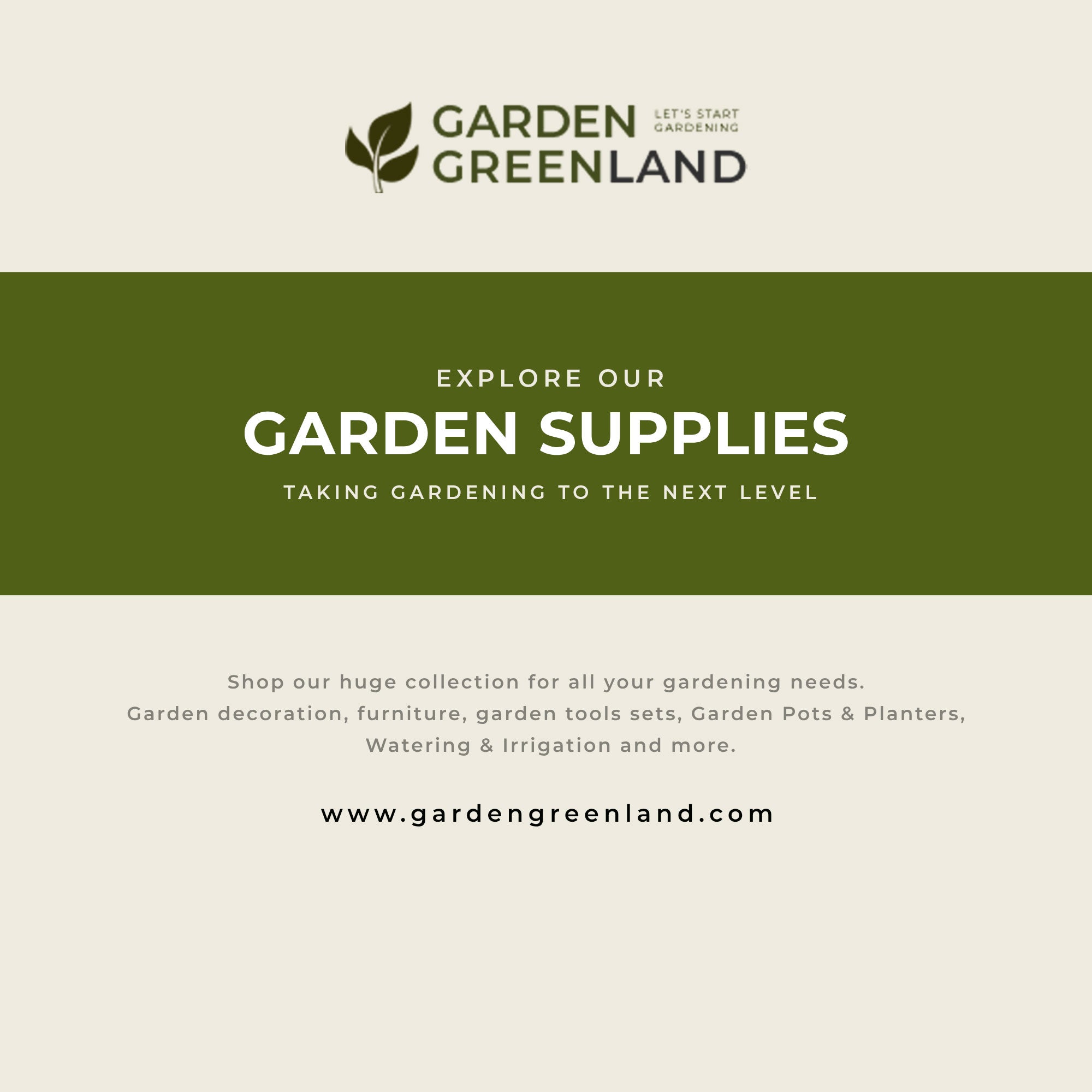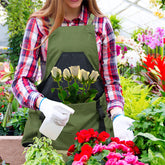How Many Potatoes Can You Grow in a Grow Bag?
Table of Contents
- Introduction
- Choosing the Right Grow Bag
- Selecting Seed Potatoes
- Optimal Planting Techniques
- Watering and Maintenance
- Harvesting Your Potatoes
- Tips for Success
- Conclusion
Did you know that you can successfully cultivate a bountiful harvest of potatoes even if you have limited outdoor space? Whether you're living in an urban apartment or simply lack a traditional garden, grow bags offer a fantastic solution. With the right techniques, a grow bag can yield up to 15 pounds of fresh, delicious potatoes. Today, we will explore everything you need to know about growing potatoes in a grow bag, including the ideal number of potatoes to plant, how to care for them, and how to enjoy your homegrown bounty.
At Garden Greenland, we are passionate about empowering gardeners of all backgrounds to embrace their green thumb. Our journey began with a commitment to provide high-quality gardening products that enhance every gardening experience. As we delve into the world of potatoes in grow bags, we will highlight some products from our collections that can make your gardening journey easier and more enjoyable.
Introduction
The humble potato has been a dietary staple for centuries, celebrated for its versatility and rich flavor. However, many aspiring gardeners may feel limited by their space or knowledge when it comes to growing these tubers. The good news is that with grow bags—simple, portable, and efficient gardening solutions—you can cultivate your own potatoes virtually anywhere.
Why is this relevant? With recent trends in urban gardening and a growing interest in sustainability, understanding how to maximize your yield in smaller spaces has never been more important. This blog post will guide you through the entire process of growing potatoes in a grow bag, from selecting the right varieties to harvesting your crop.
By the end of this guide, you’ll not only learn how many potatoes you can grow in a grow bag, but also the best practices for achieving optimal growth and flavor. Together, we will explore the planting process, maintenance tips, and harvesting techniques, ensuring you feel confident in your gardening endeavors.
What You Will Learn
- Choosing the Right Grow Bag: The importance of size and material.
- Selecting Seed Potatoes: How to choose the best varieties for your grow bag.
- Optimal Planting Techniques: Step-by-step guidance on planting and caring for your potatoes.
- Watering and Maintenance: Best practices to ensure healthy growth.
- Harvesting Your Potatoes: When and how to harvest for the best results.
- Tips for Success: Additional insights for maximizing your yield and flavor.
As we embark on this gardening journey together, we will also highlight some of our premium gardening products that can enhance your experience, making it easier and more enjoyable to grow your own food.
Choosing the Right Grow Bag
The first step in successful potato cultivation is selecting the right grow bag. Not all grow bags are created equal, and the choice you make can significantly impact your yield. Here are some factors to consider:
Size of the Grow Bag
When it comes to growing potatoes, size matters. A 50-quart grow bag is typically recommended for optimal results. This size allows enough space for the potatoes to grow and expand without competing for nutrients. Depending on the size of the potatoes you choose to plant, one bag can accommodate:
- Seed Potatoes: Generally, you can plant 3 to 6 seed potatoes in a single 50-quart bag. If you opt for smaller varieties, you may be able to fit up to 8.
Choosing a larger bag not only allows for more potatoes but also helps in maintaining soil moisture and temperature, both critical for healthy growth.
Material
Grow bags can be made from various materials, including fabric, burlap, or plastic. Here’s a quick breakdown of the most common options:
- Fabric Grow Bags: These are popular for their breathability, which prevents root rot and allows for better aeration. They are often made of durable, weather-resistant materials, making them a great choice for outdoor use.
- Burlap Bags: A sustainable option that offers good drainage and air circulation. However, burlap may not retain moisture as effectively as fabric grow bags.
- Plastic Grow Bags: While they are more affordable, they often lack the aeration and drainage benefits of fabric or burlap. If you choose plastic, ensure they have drainage holes.
At Garden Greenland, we offer a selection of durable and high-quality grow bags designed to provide the ideal growing conditions for your plants. Explore our Garden Equipment Collection for premium options.
Selecting Seed Potatoes
Choosing the right seed potatoes is crucial for a successful harvest. Here are essential factors to consider:
Type of Potatoes
Not all potatoes are created for the same conditions. Here are some popular varieties to consider for growing in bags:
- Fingerling Potatoes: Perfect for smaller spaces, these potatoes are flavorful and colorful.
- Early Potatoes: These are quick to grow and can be harvested sooner, making them ideal for impatient gardeners.
- Maincrop Potatoes: If you have a bit more time, these will yield larger potatoes but take longer to mature.
Quality of Seed Potatoes
Always opt for certified seed potatoes, as they are disease-free and more likely to produce a healthy crop. Avoid using grocery store potatoes, as they may be treated with anti-sprouting agents that can hinder growth.
Preparing Seed Potatoes
Before planting, ensure your seed potatoes are prepped correctly. Cut larger potatoes into pieces, each with at least one “eye,” and let them sit for a day or two to dry. This helps prevent rot when planted.
Optimal Planting Techniques
Once you've selected your grow bag and seed potatoes, it’s time to plant! Here’s a step-by-step guide to help you through the process:
Step 1: Prepare the Growing Medium
A well-prepared growing medium is essential for healthy potato growth. A mix of coconut coir and compost creates an ideal growing environment. Here’s how to prepare it:
- Mix Equal Parts: Combine coconut coir with compost in a large container. This mix provides moisture retention while ensuring good drainage.
- Fill the Bag: Add about 3 inches of this mix to the bottom of your grow bag and water it until moist.
Step 2: Plant the Potatoes
- Spacing: Place your seed potatoes on the soil, spacing them about 12 inches apart.
- Covering: Cover the potatoes with another 2 inches of the growing medium. Water gently to settle the soil around them.
Step 3: Care and Maintenance
Keep the soil evenly moist but avoid overwatering. Ideally, you want to maintain a balance to prevent root rot. Here are some care tips:
- Watering: Aim for about 1 inch of water per week, especially during hot weather.
- Hilling: As your potato plants grow, you will need to hill them. This means adding more growing medium around the stems, which encourages the plant to produce more tubers.
Step 4: Sunlight and Temperature
Ensure your grow bag is placed in a sunny location, as potatoes thrive in full sun. The optimal temperature for growing potatoes is between 60°F and 70°F. If you live in a particularly hot climate, consider providing some shade during the hottest parts of the day.
Watering and Maintenance
Proper watering and ongoing maintenance are crucial for producing a healthy potato crop. Here are some key practices:
Watering Guidelines
- Check Soil Moisture: Use your fingers to check the top inch of soil. If it feels dry, it’s time to water.
- Water Deeply: When watering, ensure the water penetrates deeply, encouraging the roots to grow downwards.
Fertilization
Potatoes benefit from light feeding. A balanced fertilizer or organic compost can be applied during the growing season to provide additional nutrients. Be cautious not to over-fertilize, as this can lead to excessive foliage growth at the expense of tuber production.
Pest Control
Monitor your plants for pests such as aphids and potato beetles. If you notice any infestations, consider using organic pest control methods like neem oil or insecticidal soap.
Harvesting Your Potatoes
After months of nurturing your potato plants, it's time for the rewarding part: harvesting! Here’s how to do it:
When to Harvest
- New Potatoes: If you prefer tender, small potatoes, you can start harvesting about 6 weeks after planting once the plants begin to flower.
- Full-Sized Potatoes: Wait for the foliage to die back naturally before harvesting. This usually occurs about 10-12 weeks after planting.
Harvesting Technique
- Gentle Handling: When your plants are ready to harvest, gently tip the grow bag over to access the soil and potatoes.
- Hand Harvesting: Carefully dig through the soil with your hands to locate all the tubers, being cautious not to bruise them.
Post-Harvest Care
Once you’ve harvested your potatoes, let them cure in a cool, dark, and well-ventilated space for a few days. This helps toughen their skins, improving storage life.
Tips for Success
To ensure a successful and rewarding potato harvest, consider the following tips:
- Rotate Your Crops: To prevent pests and diseases, practice crop rotation each year.
- Experiment with Varieties: Try growing different potato varieties in separate bags for a fun and flavorful experience.
- Companion Planting: Some gardeners find success by planting herbs or flowers alongside potatoes to deter pests.
At Garden Greenland, we provide an array of gardening supplies and tools to support your growing efforts. Check out our Garden Tools Collection for quality products that can enhance your gardening experience.
Conclusion
Growing potatoes in a grow bag is an accessible and rewarding venture for any gardener, regardless of space constraints. By understanding how to maximize your yield, selecting the right materials, and maintaining your plants effectively, you can enjoy a bountiful harvest of fresh potatoes right from your home.
In this guide, we covered how many potatoes to plant in a grow bag, the best practices for planting and caring for them, and when to harvest for the best flavor. We hope this information inspires you to dive into the world of potato gardening, knowing that with the right tools and techniques, you can achieve a thriving crop.
FAQ
1. How many potatoes can I grow in a 50-quart grow bag? You can typically plant between 3 to 6 seed potatoes per 50-quart bag, depending on the potato variety and size.
2. What type of soil should I use for growing potatoes in bags? A mix of coconut coir and compost is ideal, providing good drainage and moisture retention.
3. How often should I water my potatoes? Aim for about 1 inch of water per week. Check the top inch of soil to determine if it’s time to water.
4. When is the best time to harvest potatoes? You can start harvesting new potatoes about 6 weeks after planting, or wait until the foliage dies back for full-sized potatoes.
5. Can I grow potatoes in a small balcony garden? Absolutely! Grow bags are perfect for small spaces, and you can grow delicious potatoes right on your balcony.
We encourage you to explore our Garden Buildings Collection for additional storage and gardening solutions that can further enhance your gardening journey. Happy gardening!









